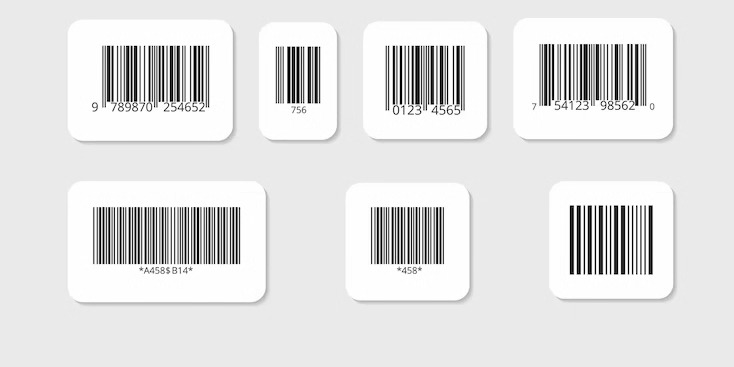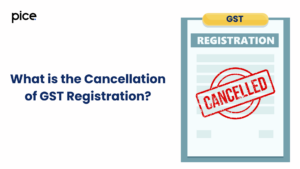Effects of Gold Jewellery GST Rate in India 2024
- 16 Aug 24
- 15 mins

Effects of Gold Jewellery GST Rate in India 2024
Key Takeaways
- GST Standardization: Gold jewellery is taxed at 3% for the gold content and an additional 5% for making charges under GST.
- ITC Availability: Businesses can claim input tax credit on GST paid on inputs related to gold jewellery manufacturing.
- Uniform Tax Rate: Gold coins, biscuits, and jewellery all share the same GST rate of 3%.
- Import Duties: Imported gold incurs a 10% customs duty plus a 3% GST.
- Tax Compliance Encouragement: The GST framework encourages compliance and transparency in the gold industry.
The Goods and Service Tax (GST) system in India has restructured the tax framework for various sectors, including the gold industry, as the rate of GST is different for precious and semi precious stones in gold jewellery. Here’s a comprehensive guide to GST implications for gold jewellery and other related gold products:
Comparison of Tax Rates on Gold Before and After GST

Before GST:
Gold jewellery was subjected to a 1% value-added tax (VAT) and a 1% excise duty, making the basic tax rate around 2%. Additionally, states could levy extra charges, leading to a total tax rate that varied across different regions but was typically around 2-2.5%.
The tax structure was complex due to these varying regional taxes, and compliance was often challenging because of the different gold tax rate and rules in each state.
After GST:
With the introduction of GST, the tax rate on gold jewellery /gold tax slabs has been standardized at 3% across India, which simplifies the previously varying tax landscape. In addition to this, there is an extra 5% GST on gold jewellery applied to the gold making charges in jewellery. This standardization not only simplifies compliance but also ensures uniformity in taxation across all states, making it easier for businesses to manage their accounting and for consumers to understand their tax obligations.
This transition from a fragmented tax system to a unified one under GST marks a significant shift towards a more streamlined approach to the taxation of hallmark gold jewellery in India.
Unorganized Sector vs Organized Sector
| Aspect | Unorganized Sector | Organized Sector |
|---|---|---|
| Documentation and Compliance | Often lacked proper documentation and tax compliance, leading to tax collection disparities. | Typically maintains thorough documentation and compliance with tax regulations. |
| Impact of GST | Encouraged to become compliant under GST, which increases transparency and contributions to the tax system. | Benefits from a uniform tax structure, enhancing operational efficiency. |
| Tax Benefits | Previously, you may have avoided full tax payments; GST pushes for more formal participation and potential penalties for non-compliance. | Can avail of input tax credit (ITC) on additional taxes paid, which was not possible before GST. |
| Cost Impact | Might face higher operational costs initially due to the need for better compliance and system upgrades. | Benefits from streamlined operations and reduced tax burdens due to ITC. |
| Market Impact | GST compels more players in the unorganised sector to enter the formal economy, potentially leading to market consolidation. | Faces less competition from unregulated entities, possibly gaining a larger market share. |
GST on Gold Imports
GST on gold imports in India is an important aspect of the broader tax structure impacting the gold industry. Here’s how it works:
The gold import rate in India is subject to a 10% customs duty. On top of this customs duty on gold, an additional 3% GST is applied. This taxation is significant because India is one of the largest importers of gold globally, primarily importing gold for consumption in jewellery manufacturing and investment.
Impact and Considerations
- Increased Costs for Importers: The combined effect of customs duty and GST increases the cost of imported gold. This cost is typically passed on to consumers, leading to a higher price for gold products in the Indian jewellery market.
- Input Tax Credit: Businesses that import gold can avail of input tax credit (ITC) for the GST paid. This means that while GST is paid at the point of import of gold jewellery, it can be offset against GST liabilities on sales, potentially neutralizing the impact of GST paid at the import stage.
- Encouraging Local Markets: The additional cost due to GST and customs duty rates on imported gold can also be seen as a measure to encourage the purchase of recycled gold and support the domestic gold industry.
GST on Gold Ornaments
Gold ornaments are taxed under GST at a rate of 3% on the total value of the gold used in the ornament. This rate is standardized across India, replacing the previous system where VAT and other taxes varied by state and often created a complex tax structure.
Additional Charges
Besides the 3% GST on gold value, there is an additional GST charge on the making charges of the gold ornaments. Making charges are the costs associated with crafting the gold into ornaments, and these are taxed at 5%. This distinction is important because it separates the raw material cost from the craftsmanship cost, each being taxed differently.
Impact of GST on Consumers and Businesses
- For Consumers: The clear separation of tax on the gold value and making charges helps consumers understand exactly what they are being charged for. It may also encourage transparency, as charges by jewellers must now itemize these costs on sales receipts.
- For Businesses: Jewelers can benefit from the input tax credit (ITC) on GST paid on inputs such as raw gold and services. This is a significant change from the previous regime, where such benefits were not available. The ITC can be used to offset GST liabilities on sales, potentially lowering the overall tax burden.
GST on Gold Coins & Gold Biscuits
Gold coins and gold biscuits are taxed at a rate of 3% under GST. This rate is uniform across India and applies regardless of whether these items are sold by licensed jewellers, banks, or other entities. This standard rate replaces previous variations where taxes on gold could differ based on state and type of seller.
Key Points to Consider
- Uniformity: The GST of 3% brings uniformity in taxation for carat gold products, which includes gold coins and biscuits, much like gold jewellery. This uniform tax rate helps simplify understanding and compliance requirements for sellers and buyers.
- No Distinction: Under GST, there is no distinction between different forms of physical gold, like hallmarked gold jewellery, coins, or biscuits—all are taxed at the same rate. This is a shift from some previous tax regimes where different forms of gold products might have had different tax rates or exemptions.
- Input Tax Credit: Sellers of gold coins and biscuits can claim an Input Tax Credit (ITC) for the GST paid on their purchases, which can then be offset against their GST liabilities on sales. This is advantageous for businesses as it reduces the overall cost of the tax burden.
Impact of GST on Investment in Gold

The implementation of the Goods and Services Tax (GST) has had significant impacts on various sectors, including investments in gold in India. Here's an overview of how GST affects gold as an investment:
- Increased Transparency and Uniformity: GST has standardized the tax rate across all forms of gold, including gold coins, biscuits, and jewellery, at 3%. Due to the uniformity, it is now simpler for investors to understand their tax obligations when investing in gold because different states and types of gold products have different tax rates.
- Input Tax Credit (ITC) Benefits: Businesses involved in the buying and selling of gold can benefit from the input tax credit system. They can offset the GST paid on their purchases (input) against their sales (output) GST liabilities. This is particularly advantageous for jewellers and traders, as it reduces the overall cost burden and can influence the pricing and profitability of trading in gold.
- Increased Costs for Retail Investors: For retail investors, the imposition of a 3% GST on gold purchases increases the initial cost of investment. This additional cost needs to be taken into consideration when calculating returns on investment, as it affects the break-even point and may extend the time required to achieve profitability from gold investments.
- Encouragement of Formal Sector Transactions: GST compels transactions to be documented and discourages the informal trading of gold. This documentation aids in creating a more organized market, which can attract more formal and institutional investments. For investors, this means more secure and verifiable transactions.
- Impact on Gold Demand: Initially, there might be a dampening effect on the demand for gold due to the increased tax burden. However, over the long term, as the market adjusts, the clarity and predictability provided by GST could lead to renewed investor confidence and stability in gold prices.
- Role of GST in Curbing Illegal Transactions: GST makes it harder for black market transactions to thrive, as it mandates proper invoicing and documentation for buying and selling gold. This is expected to curb illegal gold trading and increase government revenues from the gold sector, contributing to more regulated market conditions.
GST on Gold Processing
Gold processing involves various stages, from refining raw gold to the crafting of jewellery and other gold products. The GST applied to these processing services is crucial for setting the final cost that consumers pay.
- GST Rate on Processing Services
The processing of gold, which includes making charges (the cost of converting raw gold into finished products), is taxed at 5% under GST. This is separate from the 3% GST levied on the gold itself.
- Impact on Jewelers and Manufacturers
This distinction in applicable GST rates between the gold value and processing charges allows manufacturers and jewelers to itemize these costs separately on invoices, providing transparency for customers. Businesses can claim an input tax credit (ITC) for the GST paid on services related to the processing of gold. This helps in reducing the overall tax burden, as they can offset this against their GST liabilities from sales.
- Cost Implications for Consumers
The addition of GST to processing charges can increase the overall cost of gold jewellery and other gold items. Consumers need to consider this when purchasing gold products, as the making charges, now with an added tax, contribute significantly to the final retail price.
- Encouraging compliance and formalization
Applying GST to gold processing encourages compliance from service providers and manufacturers, who must now maintain proper records and standard invoices for GST. This step is seen as positive towards formalizing all segments of the gold industry, which has historically included a significant unorganized gold market sector.
Gold Exemptions Under GST
- Sale of Old Gold by Individuals
When individuals sell old gold jewellery or other gold items, the transaction does not attract GST, provided the sale is to a jeweler. This is because the transaction is considered a sale of personal used goods, which are exempt from GST.
- Transactions Between Consumers
Personal transactions involving gold, where no GST-registered business is involved (e.g., gifting gold within family members), are not subject to GST.
- Export of Gold Jewellery and Other Gold Articles
Gold exports are zero-rated under GST. This means that while GST is technically applicable, the rate is effectively 0%. Indian exporters can claim a refund for any input taxes paid, which helps in promoting the export market and making Indian gold products more competitive internationally.
- Supply to SEZs (Special Economic Zones)
Supplies of gold to operators in Special Economic Zones are treated as exports and are zero-rated, similar to direct exports. This facilitates the movement of gold within various segments of the market, particularly for manufacturing and trade in these zones.
- Gold Deposits under the Gold Monetization Scheme
Deposits made under the Gold Monetization Scheme are exempt from GST. This scheme allows individuals to deposit their idle gold with banks and earn interest, and its GST exemption encourages participation.
Input Tax Credit in Gold Business
- ITC allows businesses to reduce the taxes they pay on outputs (sales) by the amount of GST paid on inputs (purchases). This means that if a gold business pays GST on its purchases of raw gold, gold coins, or other supplies and services used in the process of selling gold or making gold jewellery, it can claim this tax back when it pays its output tax on sales.
- Benefits of ITC for Gold Businesses
- Reduced Cost Burden: By claiming ITC, gold businesses can effectively lower their overall tax burden. This reduction can lead to lower operational costs and a potentially lower purchase price for gold jewellery for consumers.
- Improved Cash Flow: ITC can improve a business’s cash flow by reducing the amount of cash tied up in tax payments. This is particularly important in the gold industry, where transactions are typically high-value.
- Encouragement of Compliance: To claim ITC, businesses must ensure that their transactions are properly documented and GST-compliant. This requirement promotes transparency and accountability in the industry.
- Eligibility for Claiming ITC
Gold businesses are eligible to claim ITC on the GST paid on inputs related to the business. However, there are certain conditions:
- The goods and services procured must be solely for business purposes.
- The business must have tax invoices or debit notes issued by a registered supplier.
- Suppliers are responsible for paying the government the GST charged on purchases.
- Impact on Pricing and Market Dynamics
- The ability to claim ITC can affect pricing strategies within the gold industry. Businesses that efficiently manage their ITC claims can offer more competitive prices and better manage the impact of GST on their overall pricing structure.
- The availability of ITC can also influence business decisions about sourcing materials and choosing suppliers, as businesses might prefer dealing with GST-compliant entities to ensure the availability of ITC.
- Challenges in Claiming ITC
Some challenges include maintaining proper documentation, ensuring that suppliers are compliant with GST, and managing the timing of claims to align with cash flows. Discrepancies in invoices or delays in supplier compliance can impede the ability to claim ITC promptly.
HSN Code for Gold & Jewellery
The Harmonized System Nomenclature (HSN) codes are essential for classifying goods for trade and taxation purposes, including gold and jewellery. These codes are used worldwide to standardize the classification of items, which helps in assessing customs duties and other taxes under the GST framework in India. Here's a breakdown of HSN codes for gold and jewellery:

HSN Codes for Gold: Gold (including gold plated with platinum) unwrought or in semi-manufactured forms, or in powder form:
HSN Code: 7108: This category covers raw gold in various forms before it is processed into finished goods. It includes bars, ingots, and granules.
Gold Coins:
HSN Code: 7118: This includes all types of gold coins, whether or not they are legal tender.
HSN Codes for Jewellery
Articles of jewellery and parts thereof, of precious metal or of metal clad with precious metal:
- HSN Code: 7113: This covers jewellery made from precious metals or coated with precious metals. It includes jewellery pieces adorned with or without gems.
Articles of goldsmiths' or silversmiths' wares and parts thereof, of precious metal or of metal clad with precious metal:
- HSN Code: 7114: This category includes artistic items made by goldsmiths and silversmiths using precious metals.
Importance of HSN Codes
- Taxation: Accurate classification of goods using HSN codes ensures the correct GST rates are applied. For gold and jewellery, GST rates are set based on the item’s classification under these codes.
- Compliance: Using the correct HSN codes on GST invoices is crucial for compliance. It helps in the proper filing of GST returns and smooth credit flow in the supply chain.
- Trade Facilitation: These codes are internationally recognized, which simplifies the process of importing or exporting gold and jewellery. They help in identifying the goods clearly and thus avoid any legal or procedural hassles.
Conclusion
GST has brought uniformity and transparency to the gold jewellery market in India. While it has increased the upfront tax rate compared to the pre-GST era, it has also simplified the tax structure and enabled the use of ITC, benefiting organized players and bringing more participants from the unorganised sector into the tax net.
💡If you want to pay GST dues with a credit card and experience the convenience and possibility of earning rewards on payments, then download PICE business payment app now.

















